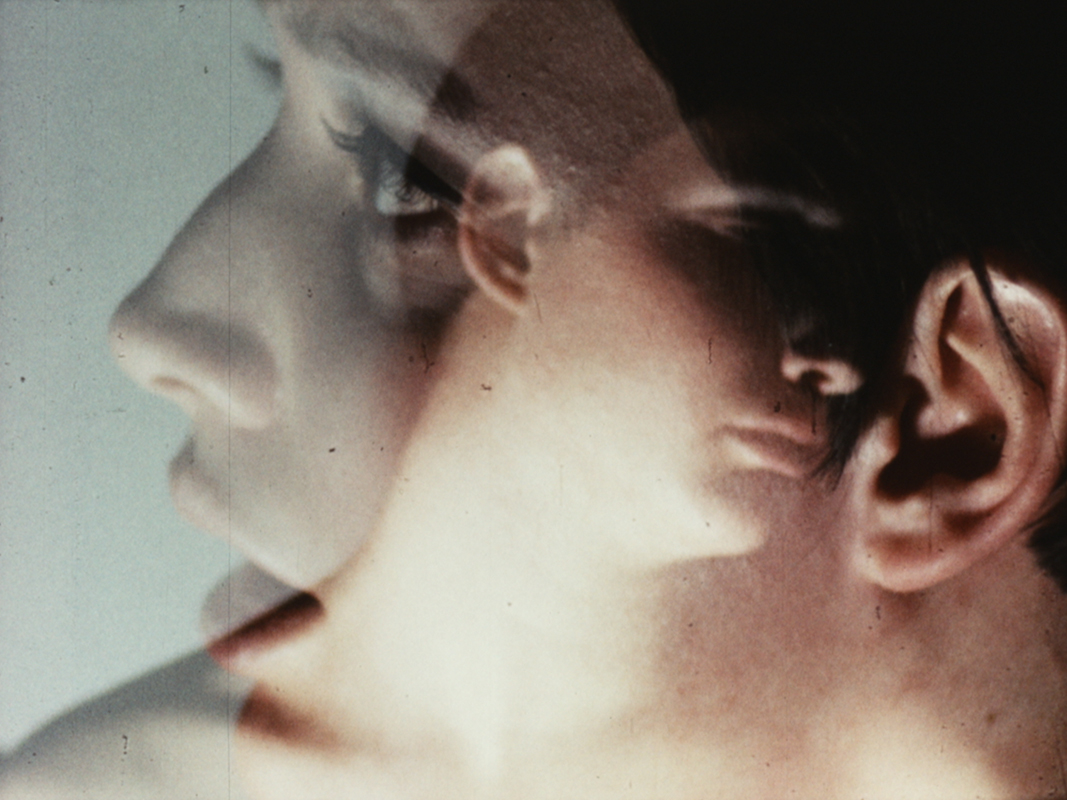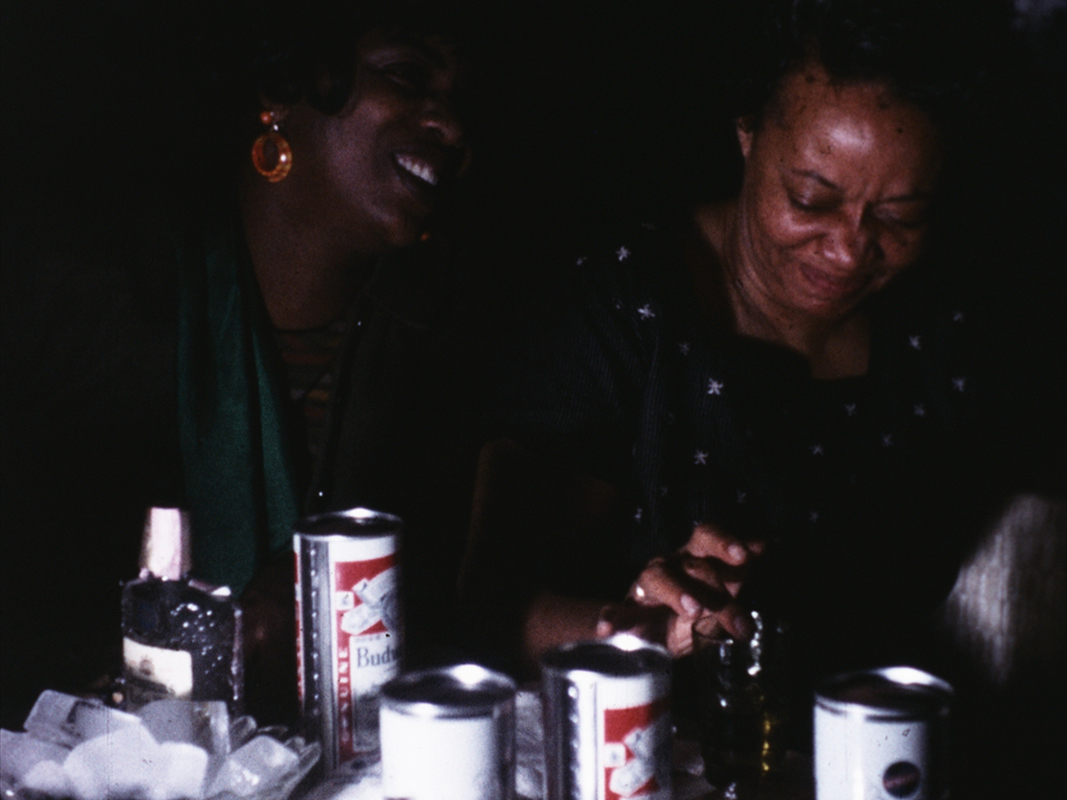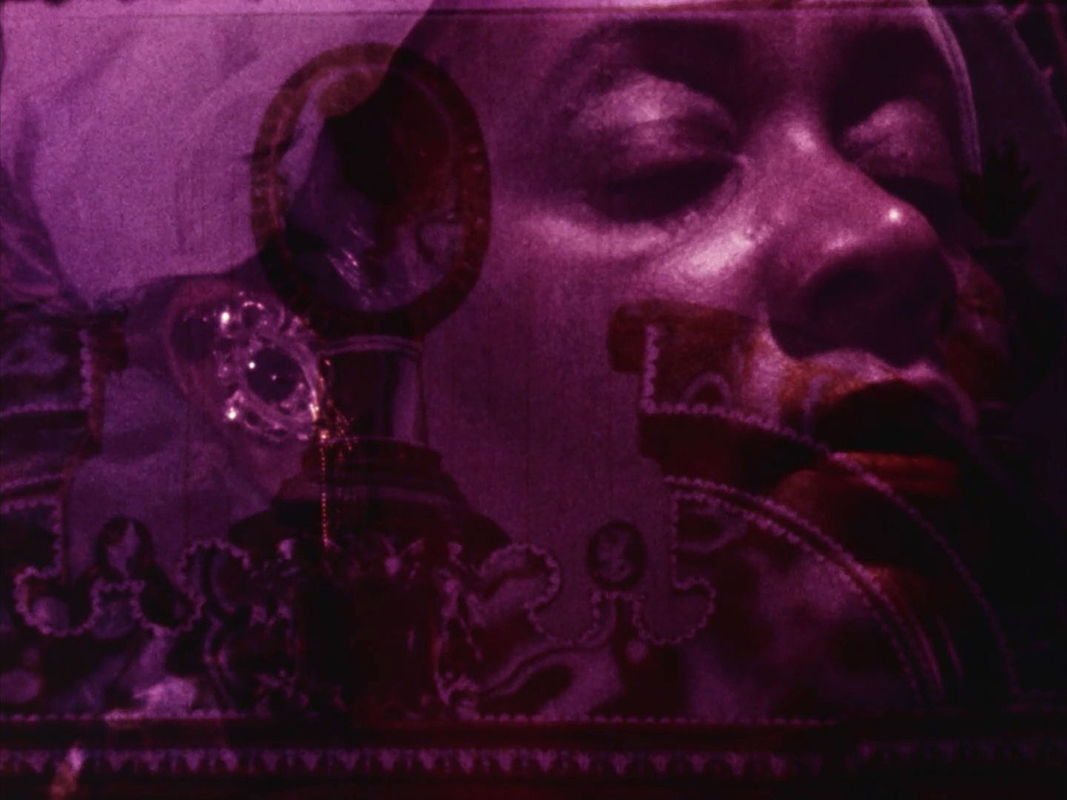Edward Owens
In the mid 1960s, Edward Owens (1949-2009) was an African-American teenager attending the Art Institute of Chicago when Gregory Markopoulos arrived to found the school’s film program. Owens, who was then studying painting and sculpture, had already been making 8mm movies for a few years; impressed by the maturity of his work, Markopoulos encouraged him to move to New York. Over the next four years, Owens created a cluster of films that display an increasing mastery of form, inspired by Markopoulos’s style but transformed into something purely his own.
Tomorrow’s Promise shows the particular influence of his mentor’s Twice a Man, telling the elliptical tale of a broken romance between a man and a woman through strobing edits, layered images, and dramatically lit nudes. The sophistication of the film is all the more impressive when one considers that Owens was only eighteen years old when he made it. But the true breakthrough in his work can be seen in his following two films, Remembrance: A Portrait Study and Private Imaginings and Narrative Facts. Both were both shot in Chicago, and bring his formidable repertoire of techniques to bear upon nonfictional subject matter: his own family and their circle. Remembrance pictures his mother, Mildered Owens, and her friends Irene Collins and Nettie Thomas. The women are shown drinking, smoking, and hanging out, their faces lit like 17th-century paintings, set to a soundtrack of pop songs. Originally titled Mildered Owens: Toward Fiction, the achingly silent Private Imaginings and Narrative Facts focuses more directly on his mother, setting her regal depiction amidst delicate pulses of editing and oblique superimpositions, evoking the gap between the homebound realities of life and desires for far-off luxury and refinement. In spite of praise by the likes of Parker Tyler and Jonas Mekas, Owens’s filmmaking career tragically ended when he was only twenty years old. (Ed Halter)
“Edward Owens may well be one of the few for whom ‘amateur’ and ‘professional’ need have no significance whatsoever: true to his own native talents, with grim determination uncanny, whether the mind in the arts is for or against beauty or its opposite twin, chaos. So that with each subsequent struggle to complete a film he will leave us breathless with anticipation for his next work.” — Gregory Markopoulos
New digital preservations by The Film-Makers’ Cooperative.


